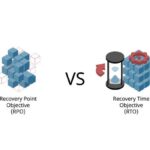When it comes to keeping your IT systems running smoothly, minimizing downtime is critical. Failover and disaster recovery are two processes that help organizations maintain continuity and protect their operations, but they serve different purposes. While both aim to keep systems functional during disruptions, their methods, speed, and scope vary. Understanding how these two approaches differ is key to building a resilient IT infrastructure.
What is Failover?
Failover is the process of automatically switching to a standby system, server, or network when the primary system experiences a failure. As an essential component of a disaster recovery strategy, it ensures that IT services remain operational without noticeable downtime. Failover solutions are often built into high-availability systems, where redundancy is critical for business continuity.
For example, in a cloud environment, if one server fails, the system can instantly redirect traffic to another server, ensuring uninterrupted access. Failover is designed to handle hardware failures, power outages, or software crashes with minimal disruption to users.
Failover is often used for mission-critical applications where downtime could result in significant financial losses or safety risks. It’s a proactive approach, relying on duplicate systems that are continuously monitored and ready to take over at a moment’s notice.
What is Disaster Recovery?
Disaster recovery is a broader strategy designed to restore IT systems and data after a catastrophic event. These events can include natural disasters, cyberattacks, or prolonged power outages that disrupt entire data centers. Unlike failover, which focuses on immediate availability, disaster recovery emphasizes restoring normal operations and preventing long-term damage.
A disaster recovery plan includes processes for backing up data, restoring critical systems, and ensuring communication among teams during an incident. Recovery time can vary depending on the severity of the disruption and the complexity of the IT environment.
Disaster recovery is often a last line of defense, activated when failover systems are insufficient to handle the situation. It’s about keeping systems online and safeguarding business continuity by recovering lost data, rebuilding infrastructure, and ensuring compliance with industry regulations.
4 Key Differences of Failover vs Disaster Recovery
While failover and disaster recovery share the same primary goal, there are some important differences between them.
Purpose
Failover is focused on maintaining uptime and ensuring immediate availability of systems by switching to a backup. It’s a solution designed to prevent even minor disruptions from affecting operations, making it essential for systems where continuity is non-negotiable. Disaster recovery, in contrast, is about restoring full operations and recovering lost data after a significant disruption. It addresses the aftermath of large-scale events that cause widespread damage, ensuring long-term stability and resilience.
Speed
Failover operates in real-time, often within seconds or minutes, by automatically switching to a backup system to ensure mission-critical services remain available. This immediate response minimizes disruptions and keeps essential operations running seamlessly. Disaster recovery, however, is a broader process that can take seconds, hours, or days, depending on the scope of the incident and the recovery plan. Organizations often use a tiered system to prioritize recovery, categorizing systems as mission-critical, business-critical, or important business services. Mission-critical systems, such as customer-facing applications or transaction processing, are restored first to minimize operational impact. Business-critical and important services, such as internal communication tools or reporting systems, are addressed in subsequent phases to ensure a structured and efficient recovery process.
Scope
Failover typically addresses localized failures, such as a server crash or network outage, and ensures continuity for specific systems. It’s a solution for events that affect only a portion of the IT infrastructure, providing seamless transitions to backup resources. Disaster recovery is designed to handle larger-scale disruptions, such as natural disasters or ransomware attacks, impacting the entire IT infrastructure. It focuses on restoring systems, data integrity, and operational workflows.
Implementation
Failover requires duplicate systems or resources that are continuously running and ready to take over. This redundancy ensures that the switch happens instantly, but it also demands significant planning and investment in infrastructure. Disaster recovery relies on data backups, recovery plans, and off-site infrastructure that can be deployed when needed. While not always active, these resources must be carefully managed to ensure they are available and functional during an emergency.
Explore Comprehensive Disaster Recovery Solutions with Cynergy!
At Cynergy Technology, we know how critical it is to keep your business running, no matter what challenges arise. That’s why we offer advanced Backup and Disaster Recovery Services to help you minimize downtime and protect your IT operations. Whether you need real-time failover systems to keep essential services online or a robust disaster recovery plan to prepare for the unexpected, we’ve got you covered.
Our solutions are designed to safeguard your data, ensure business continuity, and quickly get your operations back to normal after an incident. With our expertise, you can trust that your IT systems will be ready to handle anything, from minor server failures to large-scale disasters.
Don’t wait until downtime strikes—let us help you build a resilient IT strategy today. Contact us for a free consultation and discover how Cynergy Technology can support your business with failover and disaster recovery solutions!







